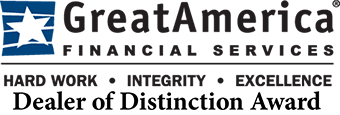MPS programs are typically initiated with the idea of cutting costs for an organization. Along with direct cost cutting that involves print devices and supplies, opportunities to improve workflows are often discovered. Sustainability is naturally improved by increasing the efficiency of document production and lifecycles.

The low hanging fruit in a MPS project is excessive devices. Reducing the number of print output devices reduces power consumption and possible ozone emissions. Along with reducing devise related costs, energy use and emissions, other benefits are captured as we reduce: space requirements, impact on the buildings cooling system, supply storage and purchasing related costs, and the impact on IT infrastructure. This last issue is often overlooked. Every device in use requires technical support for operation, drivers and connectivity. If the device is networked, which is the best practice, there is impact on the network by using possibly scarce IP addresses and ports. The sum of these facts makes it important to limit devices as much as possible without impacting organizational goals and mission.
If we can’t eliminate a device, we want to make sure what we are using is the most efficient available. Along with evaluation of supply/repair costs, other things to be considered are: how much energy they consume, will they automatically duplex to save paper, and what type of supplies are used? A typical desktop printer uses a cartridge that may be refilled a few times. However, it will probably end up in a landfill because they are not easy to recycle. This is because they contain many components made of different materials and are labor intense to separate. Many large workgroup printers and copier based MFD’s (multi-functional devices) utilize separate supply components that are easily recycled and more cost effective.
A good MPS methodology should include the evaluation of and possible improvements to processes surrounding document creation and use. Reducing output, storage, and handling of documents are improvements that lower environmental impact while cutting costs. Replacing old technology like carbonless forms can dramatically cut costs and improve the environment all around. The paper used in this process contains a wide array of chemicals.
When document output devices and processes are not managed, their numbers usually grow and become inefficient. When taking control, there is often resistance to a MPS program by users. However, by increasing awareness of the benefits of environmental and financial sustainability the resistance for personal reasons can be reduced. And of course, organizational goals and missions should always be kept in mind during the planning process.
We’d Like to Be Your MPS Partner. Ask Us Anything!
At Doing Better Business, we are adept at helping our clients to streamline their office printing environment while bringing control, cost management, and security to the table. Typically, we can help clients reduce spending by anywhere from 20% to 40%, all while optimizing business processes and workflows and offering a greater level of service to their end users.
Our MPS solutions can assist your organization in decreasing overall print spend, getting a grip on print security, improving efficiency and productivity, and a host of other benefits.
Ask us anything! Contact a representative from Doing Better Business and discover how our MPS program can benefit your business today.

